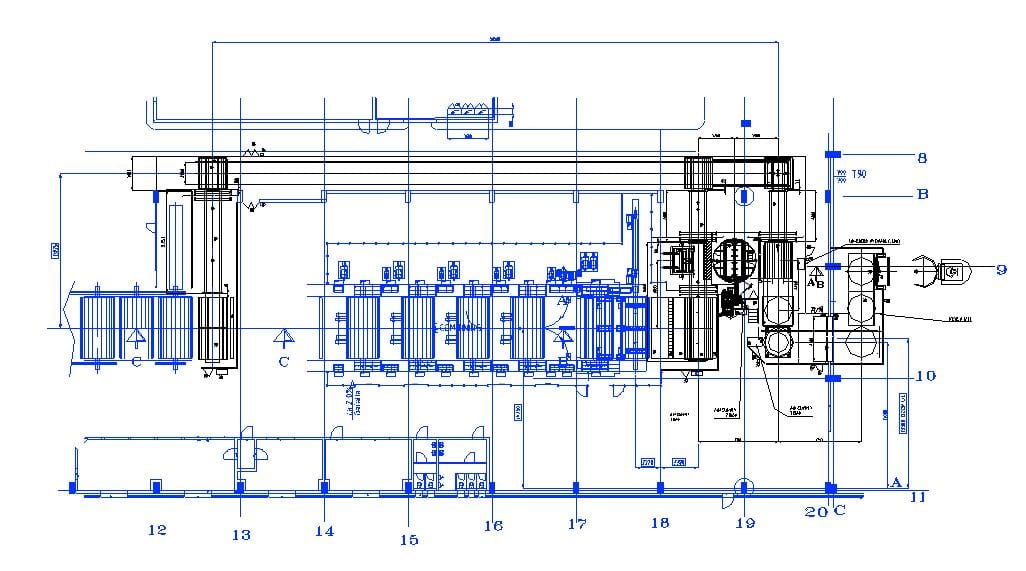Fis Impianti managing director Fabio Malnati talks to TW about the critical importance of good plastic film protection on jumbo rolls
Today, issues such as CRM responses, efficiency of choices and higher production flows mean that papermakers need to take two further steps: increase paper roll diameters to 3,000mm or higher as well as increase the softness parameter and decrease their weight.
Due to the increase of diameter size many mills produce and convert jumbo rolls directly in the same site without an external sell. After production on the TM, the importance of a good plastic film protection on the jumbo rolls is critical. Respecting product quality as well as reducing the damage from intermediate storage operations convinces many mills to invest in innovative systems to protect and handle their “soft giants” with care. Fire hazard risk reduction should also to be taken into consideration for the intermediate wrapping process.
ELIMINATING STRESSES ON THE OUTER SURFACES OF JUMBO ROLLS
Jumbo tissue roll production necessitates that the rolls, because of their softness, are supported on reel spools during manufacture and handling. However, once the spool has been removed from the roll, the jumbo tissue rolls must be deposited onto a belt conveyor for transportation support and on to rollers for wrapping. Rollers have been – and still are – successfully used with rolls of conventional stiff papers (the behaviour of which is shown in Fig 1). The peculiarities of conventional paper rolls rotation are:
- the instantaneous centre is the same as the centre of the roll
- displacement and speeds of each point of the paper roll are perpendicular to its distance from the rotation axis and directly proportional to such a distance
The soft cylindrical tissue roll body (Fig 2) laid onto two cylindrical rollers contacts the rollers over a large area. The speed of the peripheral part of the soft roll on the contact area will be the same as the outer surface of the roller. The absolute value is constant but it is direct just as the tangent is to the roller; the direction continuously changes along the arc of contact. Therefore it is not possible to determine a constant centre position.
However, it is apparent that the soft tissue paper roll will rotate as a whole body. On careful observation, the tissue roll shows two clearly different area characteristics. The behaviour of the first area (the outer “cross hatched” in Fig 2) will be of a plastic “fluid” body, while the behaviour of the second area (the inner) will be of a plastic “stiff” body.
The plastic-fluid behaviour of the ‘cross hatched’ area of the roll (Fig 2) follows along tensile, compression and shearing stresses causing crumpling and tearing of the outer area resulting in irreversible damage. The new concept, processed and patented by FIS Impianti and clearly shown in Figures 3 and 4, overcomes these problems because of the predictable jumbo tissue roll rotation during wrapping by means of a special conveyor.
The new concept development carries out both the jumbo tissue roll translation through the wrapping machine and guides the same rotating on a well defined axis during wrapping cycle.
The central part of the conveyor structure, holding the upper belt, has been manufactured so that the different sectors adjust themselves into a circular shape that has the same diameter as the theoretical diameter of the jumbo tissue roll. When the conveyor moves the jumbo roll rotates on its axis without moving from the surface depression as if it were a rigid body; and most important of all, it does so without suffering.
[box]
A CASE HISTORY: HAYAT AND TUL KAGIT
Two orders for complete wrapping and handling lines for jumbo tissue rolls in Turkey
Turkey is one of the fastest growing tissue markets in the world and two of its leading mills, Hayat and Tul Kagit, chose Fis for their new wrapping and handling production lines.
In 2011, both mills started up tissue machines that produced 60,000tpy of prime quality tissue. In 2005,
Hayat installed a complete Fis line for its TM1, and it then repeated the order. For the new line Hayat chose a similar configuration for a wrapping machine and handling line; the only change was to replace the TM1 LGV system for mother rolls with traditional transfer shuttles with a belt conveyor from the shaft puller to the wrapping line. Additionally, Hayat ordered an automatic transfer system for the wrapping line to the new jumbo roll warehouse located 70m away.
Tul Kagit has recently entered the Turkish tissue market as a strong new player. It chose Fis to implement a system where the rolls are collected automatically from the TM as well as the combing line using a gentle touch belt conveyors and shuttle. Wrapping machine Axial 93 with rotating arm and belt is able to take care of extra soft roll and small grouped slices, while an Upender transfer conveyors and Automatic A4 labelling complete the scope of supply.

[/box]
































